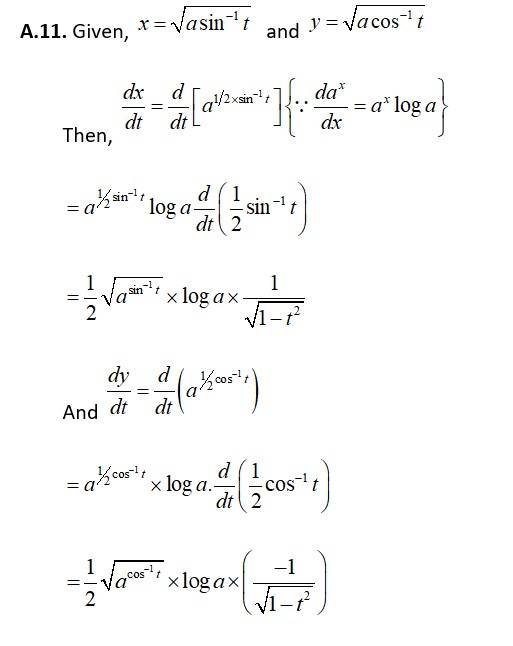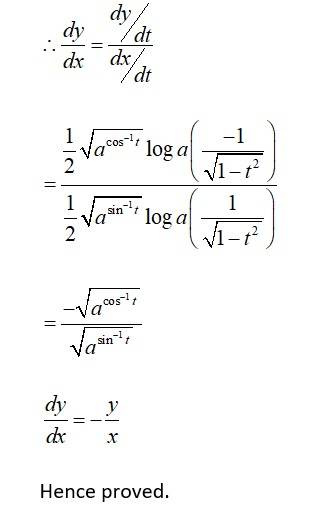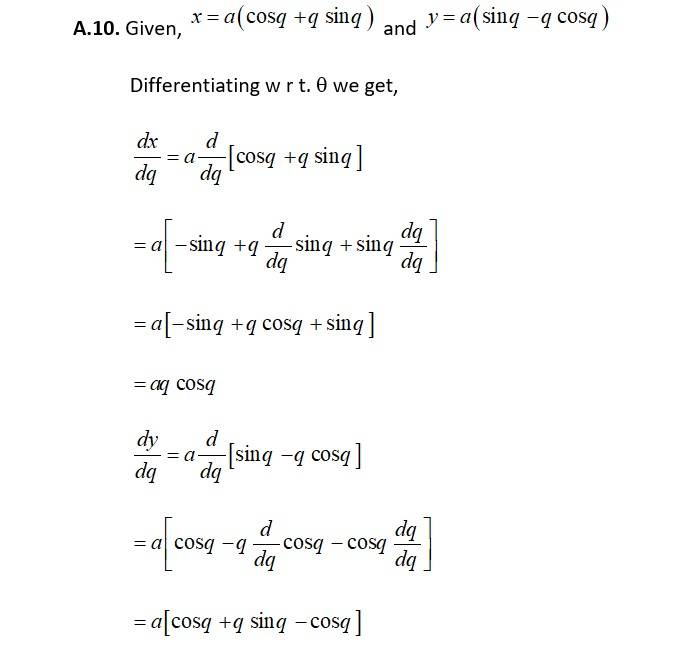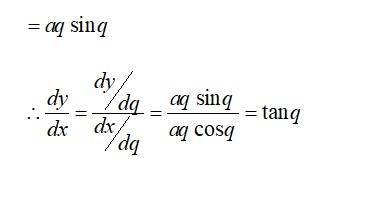Maths
Get insights from 6.5k questions on Maths, answered by students, alumni, and experts. You may also ask and answer any question you like about Maths
Follow Ask QuestionQuestions
Discussions
Active Users
Followers
New answer posted
6 months agoContributor-Level 10
17. We can write the given statement as:-
For n = 1,
We get
Which is true.
Consider P(k) be true for some positive integer k.
(1)
Now, let us prove that P(k+ 1) is true.
Now,
P(k +1) =
By using (1),
=
P(k+ 1) is true wheneverP(k) is true.
Therefore, from the principle of mathematical induction, theP(n) is true for all natural number n.
New answer posted
6 months agoContributor-Level 10
Given: Equation of the family of curves
Differentiating both sides with respect to x, we get:
Multiplying equation (1) with (2) and then subtracting it from equation (2), we get:
Differentiating both sides with respect to x, we get:
Dividing equation (4) by equation (3), we get:
This is the required differential equation of the given curve.
New answer posted
6 months agoContributor-Level 10
16. Let the given statement as
P(n)= + … +
If n=1, then
P(1)= = = =
which is true.
Consider P(k)be true for some positive integer k
P(k)= + … + = ------------------(1)
Now, let us prove P(k+1) is true.
P(k+1)= + … +
By using (1),
=
=
=
=
=
=
=
=
? P(k+1) is true whenever P(k) is true.
Therefore, from the principle of mathematical induction, the P(n) is true for all natural number n.
New answer posted
6 months agoContributor-Level 10
Given: Equation of the family of curves
Differentiating both sides with respect to x, we get:
Again, differentiating both sides with respect to x, we get:
Multiplying equation (i) with (ii) and then adding it to equation (ii), we get:
Now, multiplying equation (i) with (iii) and subtracting equation (ii) from it, we get:
Substituting the values of and in equation (iii), we get:
This is the required differential equation of the given curve.
New answer posted
6 months agoContributor-Level 10
Given: Equation of the family of curves
Differentiating both sides with respect to x, we get:
Again, differentiating both sides with respect to x, we get:
Dividing equation (2) by equation (1), we get:
This is the required differential equation of the given curve.
New answer posted
6 months agoContributor-Level 10
Given: Equation of the family of curves
Differentiating both sides of the given equation with respect to x, we get:
Again, differentiating both sides with respect to x, we get:
Hence, the required differential equation of the given curve is
New answer posted
6 months agoContributor-Level 10
15. We can write the given statement as
P(n)=12+32+52+ … + (2n – 1)2=
forn=1
P(1)=12=1=
= which is true.
Consider P(k) be true for some positive integer k
P(k)=12+32+52+ … + (2n – 1)2= ------------------(1)
Now, let us prove that P(k+1) is true.
Here,
12+32+52+ … +(2k – 1)2+(2(k+1) –1)2
By using (1),
=
=
=
=
we can write as,
=
=
=
=
=
P(k+1) is true whenever P(k) is true.
Hence, from the principle of mathematical induction, the P(n) is true for all natural number n.
New answer posted
6 months agoContributor-Level 10
14. Let the given statement be P(n) i.e.,
P(n)= …
If n =1
P(1)= = 2 =1+1= 2
which is true.
Assume that P(k) is true for some positive integer k i.e.,
P(k): … .---------------------(1)
Now, let us prove that P(k+1) is true.
Here,
P(k+1)= …
By using (1), we get
(k+1).
L.C.M.=(k+1).
= (k+1)+1
? P(k+1) is true whenever P(k) is true.
Therefore from the principle of mathematical induction the P(n) is true for all natural numbers n.
Taking an Exam? Selecting a College?
Get authentic answers from experts, students and alumni that you won't find anywhere else
Sign Up on ShikshaOn Shiksha, get access to
- 65k Colleges
- 1.2k Exams
- 679k Reviews
- 1800k Answers






